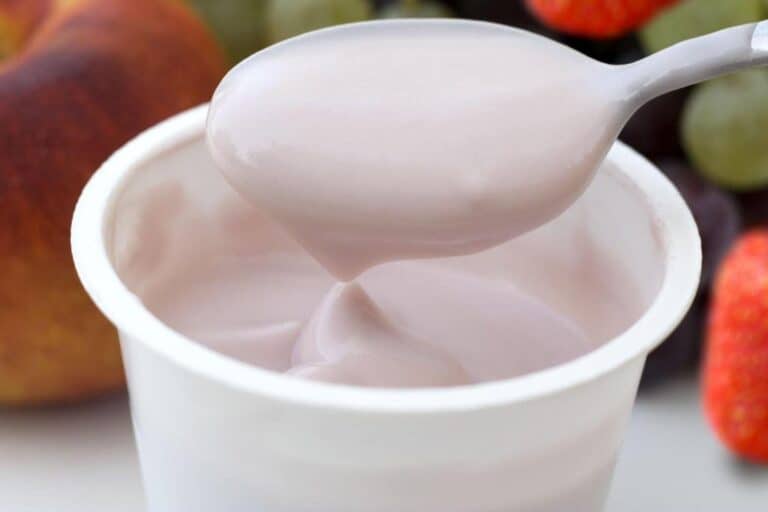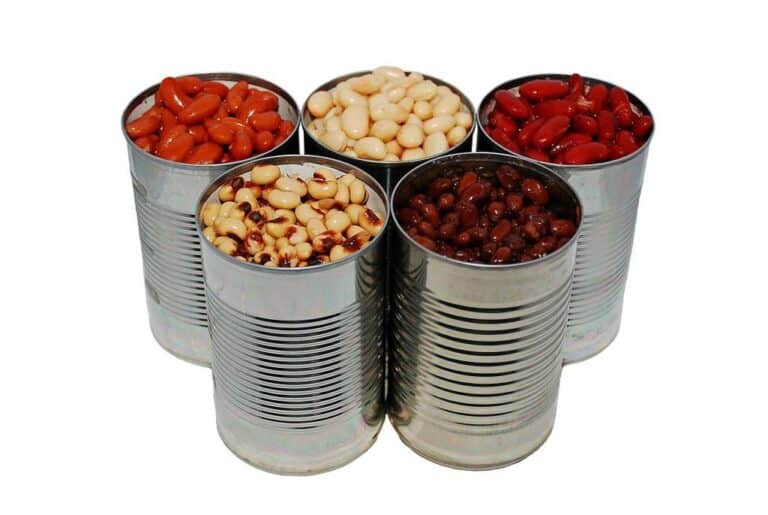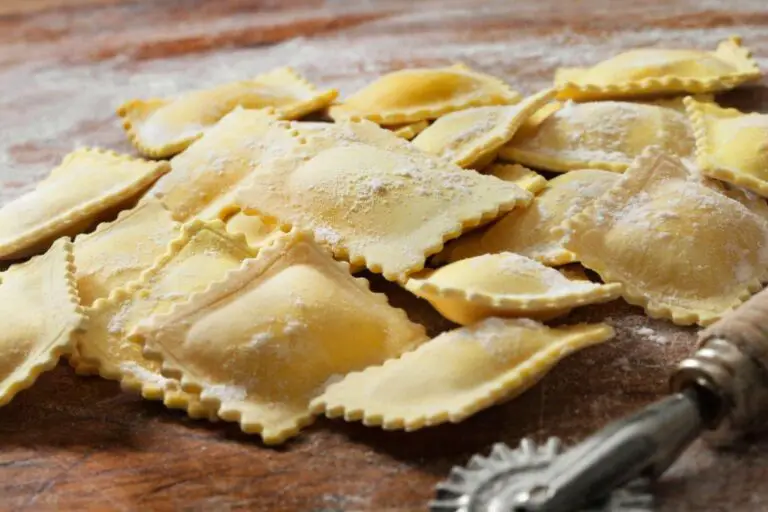Does Mustard Need to Be Refrigerated after Opening? How To Store Mustard?
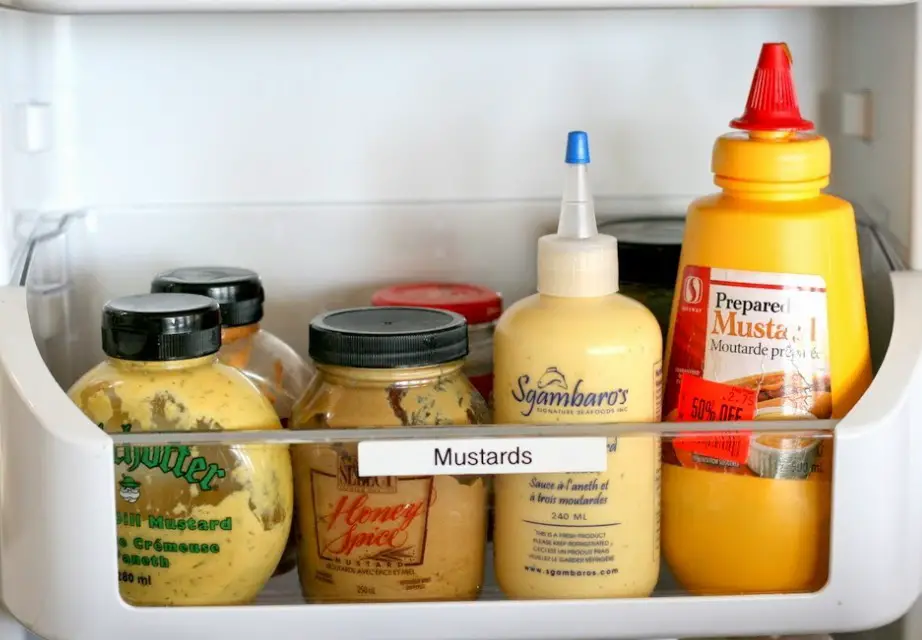
Have you ever opened a jar of mustard, used it for a few meals, and then wondered if it’s okay to keep it at room temperature or if it’s necessary to store it in the fridge? Mustard doesn’t have to be kept in the fridge after it’s been opened, but it’s a good idea if you want to keep its flavor.
In this post, we’ll explain the reasons why some mustards need to be refrigerated while others don’t. You’ll find out how to store your mustard properly and ensure it stays fresh and safe to eat.
Whether you’re a mustard lover or just a curious foodie, let’s dive in and find out how to store mustard! Get ready to say goodbye to soggy and bland mustard forever!
What Is Mustard and What It Is Made Of?
Mustard is a popular condiment that has been enjoyed for thousands of years. It is made from the seeds of the mustard plant and is widely used as a flavor enhancer in various dishes. Mustard is known for its pungent, tangy, and slightly sweet flavor, and it adds a delicious zing to everything from sandwiches to sauces and marinades.
The primary ingredient in mustard is mustard seeds, which come in three different varieties: black, brown, and yellow. Most mustards are made with yellow mustard seeds, which give them their bright yellow color and mild flavor. Black mustard seeds are more pungent and have a spicier flavor, while brown mustard seeds have a milder taste and are used more frequently in specialty mustards.
In addition to mustard seeds, other ingredients are added to create different types of mustard. These ingredients include vinegar, wine, or other acidic liquids, salt, sugar or other sweeteners, and sometimes additional spices or herbs. The taste, texture, and overall quality of mustard depend on the kinds and amounts of ingredients used.
One of the most popular forms of mustard is Dijon mustard, which is made from brown mustard seeds, white wine, and vinegar. Dijon mustard is known for having a smooth, creamy texture and a mild flavor. Because of this, it can be used in a wide range of dishes.
Another popular type of mustard is honey mustard, which is made from yellow mustard seeds, honey, and vinegar, and has a sweet and tangy flavor.
What Happens to Mustard After Opening?
After the bottle or jar of mustard is opened, there are several factors that can affect its quality, shelf life, and overall taste. Understanding what happens to mustard after opening can help you determine the best storage methods and prevent spoilage.
One of the main factors that affects mustard after opening is exposure to air. Oxygen can cause the flavor of the mustard to change and the texture to become thicker or more runny. To prevent this, keep the mustard tightly sealed and stored in a cool, dark place.
Temperature can also make a difference for mustard. High temperatures can cause the mustard to spoil and become rancid, while low temperatures can cause the mustard to become thicker and harder to spread. So, it is recommended to store mustard in a cool, dry place, such as a pantry or refrigerator.
Does Mustard Need to Be Refrigerated After Opening?
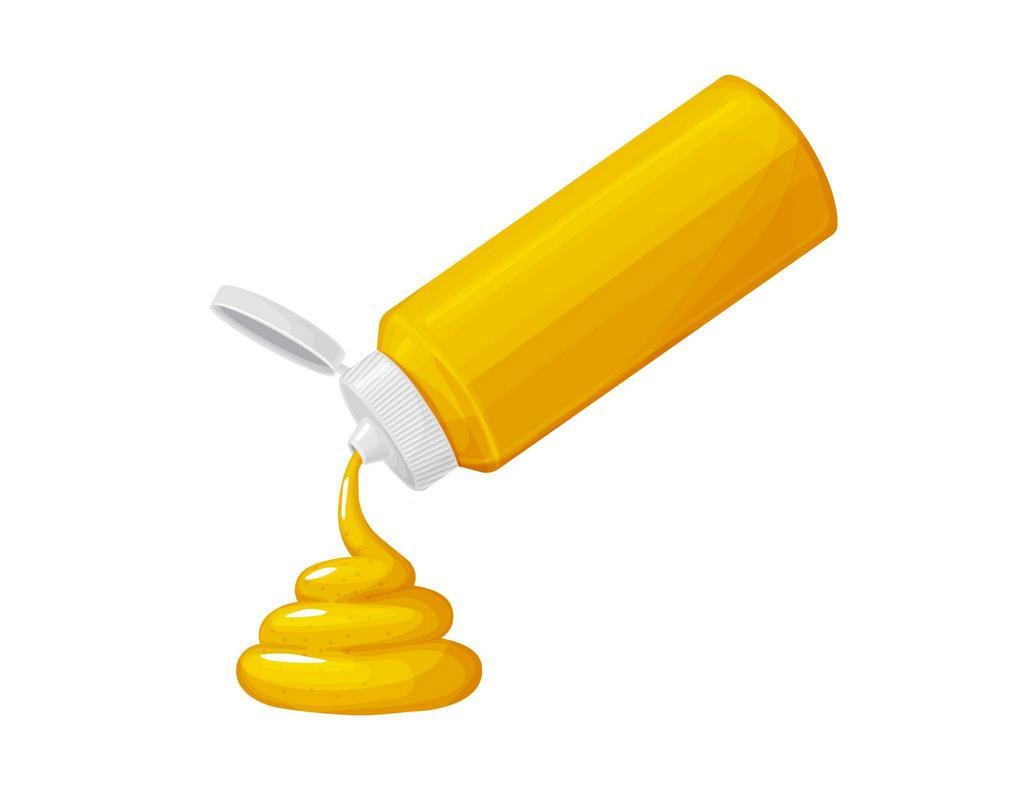
Mustard has vinegar in it, which acts as a natural preservative and helps it last longer. But when the mustard jar is opened and exposed to air, the vinegar level drops. This makes the mustard more likely to go bad.
Refrigeration is necessary for mustard because it slows down the growth of bacteria and other microorganisms that can cause spoilage. When mustard is kept at a temperature below 40 °F (4 °C), harmful bacteria grow much more slowly. This helps the product last longer. Refrigerating mustard also helps keep its flavor and texture, so it stays fresh and tangy for a longer time.
When you compare mustard that has been refrigerated with mustard that has not, it is clear that mustard that has been refrigerated lasts longer and keeps its quality better.
Mustard that has not been refrigerated can develop off flavors and odors, indicating that it has gone bad. On the other hand, mustard that has been kept in the fridge stays fresh longer and doesn’t show these signs of going bad.
Does Refrigerating Mustard Change Its Flavor?
Many people put mustard in the fridge to keep it fresh for longer and keep it from going bad. However, one question that often arises is whether refrigerating mustard will change its flavor.
The answer to this question is that refrigerating mustard can change its flavor, but the extent to which this happens depends on several factors. One of the main factors that can affect the flavor of refrigerated mustard is the temperature at which it is stored.
If the temperature is too low, this can cause the mustard to lose some of its flavor and become bland. On the other hand, if the temperature is too warm, this can cause the mustard to spoil, which can also affect its flavor.
Another factor that can affect the flavor of refrigerated mustard is the length of time that it is stored. The longer mustard is stored in the refrigerator, the more likely it is to lose some of its flavor and become less pungent. This is because the vinegar in the mustard can begin to evaporate over time, which can cause the flavor to fade.
The type of mustard and the ingredients used can also have an impact on the flavor of refrigerated mustard. For example, Dijon mustard, which has more wine vinegar than yellow mustard, may lose its flavor more quickly when put in the fridge than yellow mustard, which has more distilled vinegar.
In the same way, whole-grain mustard, which has a coarser texture and is made with whole mustard seeds, may not change its flavor as much when it’s in the fridge.
How to Store Mustard Properly
Proper storage of mustard is crucial to maintaining its quality and preventing spoilage. Here are some important tips to follow when storing mustard:
- First, after each use, you need to make sure the jar is tightly closed. Air exposure can cause the mustard to spoil, so tightly sealing the jar helps to prevent this. Only use a clean utensil, such as a spoon or knife, to scoop out the mustard, as using a dirty utensil can introduce bacteria into the jar.
- Refrigerator is the best place to store mustard. This will help to slow down the growth of bacteria and other microorganisms that can cause spoilage. When storing mustard in the refrigerator, put it on a shelf, rather than on the door, as the door is the warmest part of the refrigerator and can cause the mustard to spoil faster.
- You need to check the expiration date on the mustard jar before using it. While mustard has a relatively long shelf life, checking the expiration date is still a good idea to ensure that it is still safe to eat. If the expiration date has passed, or if you notice any signs of spoilage, such as an off-flavor or a rancid odor, it’s best to discard the mustard.
- Take note that the shelf life of mustard can vary depending on the type of mustard and the ingredients used. For instance, Dijon mustard has a shorter shelf life than yellow mustard because it contains less vinegar. Whole-grain mustard, which has a coarser texture and contains whole mustard seeds, has
Shelf Life of Opened and Unopened Mustard
The shelf life of mustard, both opened and unopened, depends on a number of things, such as the type of mustard, its ingredients, and how it is stored. In general, unopened mustard has a longer shelf life than opened mustard, and it can last for up to two years or longer if stored properly.
But mustard has a shorter shelf life once the jar has been opened, so it’s important to store it the right way to keep it fresh and keep it from going bad.
Because the vinegar and salt in mustard keep it from going bad, mustard that hasn’t been opened usually lasts longer than mustard that has been opened. The acidic and salty environment of the mustard helps to prevent the growth of bacteria and other microorganisms that can cause spoilage. As a result, unopened mustard can be stored in a pantry or cupboard for a longer period of time than opened mustard.
Once the jar has been opened, the shelf life of mustard decreases, and it’s important to store it in the refrigerator. This helps to slow down the growth of bacteria and other microorganisms that can cause spoilage. When storing opened mustard in the refrigerator, it’s best to place it on a shelf, rather than on the door, as the door is the warmest part of the refrigerator and can cause the mustard to spoil faster.
There are several factors that can affect the shelf life of mustard, such as the type of mustard, the ingredients used, the manufacturing process, and the storage conditions. For example, because Dijon mustard has less vinegar than yellow mustard, it doesn’t last as long. On the other hand, whole-grain mustard, which has a coarser texture and contains whole mustard seeds, has a longer shelf life than other types of mustard.
How to Prolong the Shelf Life of Mustard
It’s important to keep mustard’s quality and keep it from going bad by making it last longer. There are several steps that you can take to help extend the shelf life of mustard and ensure that it remains fresh and flavorful for as long as possible.
One of the most important steps in prolonging the shelf life of mustard is to store it properly. This means keeping it in a cool, dark place, such as the refrigerator, where it is protected from light and temperature fluctuations. When storing mustard in the refrigerator, it’s best to place it on a shelf rather than on the door, as the door is the warmest part of the refrigerator and can cause the mustard to spoil faster.
Another important factor in prolonging the shelf life of mustard is to make sure that the jar is tightly closed after each use. Mustard that gets too much air can go bad, so making sure the jar is tightly sealed helps to keep this from happening. It’s also best to use a clean utensil, such as a spoon or knife, to scoop out the mustard, as using a dirty utensil can introduce bacteria into the jar.
The type of mustard and the ingredients used can also affect the shelf life of mustard. For example, yellow mustard, which contains more vinegar than other types of mustard, has a longer shelf life than Dijon mustard. Whole-grain mustard, which has a coarser texture and contains whole mustard seeds, has a longer shelf life than other types of mustard.
Finally, it’s important to check the expiration date on the mustard jar before using it. While mustard has a relatively long shelf life, checking the expiration date is still a good idea to ensure that it is still safe to eat. If the expiration date has passed, or if you notice any signs of spoilage, such as an off-flavor or a rancid odor, it’s best to discard the mustard.
Signs of Spoilage in Mustard
Mustard is a popular condiment that can last for several months or up to a year after opening, depending on the type and ingredients. However, if not stored properly, or if it has been opened for an extended period, it can spoil. If you know what makes mustard go bad, you can avoid eating spoiled food and save money by not throwing it away.
One of the most obvious signs of spoilage in mustard is a change in color. If the mustard has turned a different color than its original hue, it is a clear indication that it has gone bad. Yellow mustard that has turned brown, for example, is a sign that it is no longer safe to consume.
Another sign of spoilage in mustard is a change in texture. If the mustard has gotten thicker, runnier, or lumpy, that is a clear sign that it is no longer safe to eat. This change in texture is often caused by exposure to air, temperature fluctuations, or bacterial growth.
A distinct, rancid odor is also a clear sign of spoilage in mustard. This odor is often described as sour or bitter, and it can be a clear indication that the mustard has gone bad. If you notice a rancid odor when you open the bottle or jar of mustard, it is best to discard it immediately.
In addition to these signs, mold growth is also a clear indication that the mustard has become spoiled. Mold can grow on the surface of the mustard, or inside the bottle or jar, and it is a clear indication that the mustard is no longer safe to consume. If you notice mold growth on your mustard, it is best to discard it immediately.
Is There Any Non Yellow Mustard?
Yellow mustard is often used as a condiment for hot dogs, hamburgers, and sandwiches, but these other types of mustard can be used in a variety of ways in cooking and as a condiment.
Yes, there are several types of mustard that are not yellow.
- Dijon mustard is often made with white wine and brown and/or black mustard seeds, giving it a more pungent, spicy flavor than yellow mustard.
- Spicy brown mustard is made with brown or black mustard seeds and has a more intense flavor than yellow mustard.
- Hot mustard is also made with black or brown mustard seeds and has an even spicier flavor than spicy brown.
- Whole grain mustards are made with whole mustard seeds and have a coarse texture.
- Honey mustards are usually a combination of yellow and Dijon mustards mixed with honey for sweetness.
- German mustard, which is typically made with a combination of brown and yellow mustard seeds and has a sweeter, milder flavor than traditional yellow mustard.
- Horseradish mustard, which is made with a blend of yellow mustard seeds, horseradish, and vinegar for a pungent, zesty flavor.
What Condiments Do Not Need to Be Refrigerated after Opening?
Condiments play a vital role in adding flavor and enhancing the taste of dishes. However, many people are not aware that not all condiments require refrigeration after opening. Some condiments are shelf-stable and can be stored outside the fridge, which makes them more convenient for cooking.
Common condiments that don’t require refrigeration include soy sauce, oyster sauce, fish sauce, refrigerated honey, and hot sauce. These condiments are made from ingredients that are naturally preserved and do not spoil easily, making them safe to store outside the fridge. Soy sauce, for instance, is made from fermented soybeans and salt, which creates a salty, flavorful sauce with a long shelf life.
Vinegars and olive oils are also considered pantry-bound condiments, and they can be stored in a cool, dark place. Vinegars are acidic, and the high acidity levels prevent the growth of harmful bacteria, which makes them safe to store outside the fridge. Olive oil, on the other hand, is best stored in a cool, dark place to prevent it from becoming rancid and losing its flavor.
Another condiment that is best kept out of the fridge is coconut oil. When it gets cold, coconut oil turns into a solid that is hard and hard to work with. To keep coconut oil in its liquid form, it is best stored at room temperature, away from direct sunlight and heat sources.



